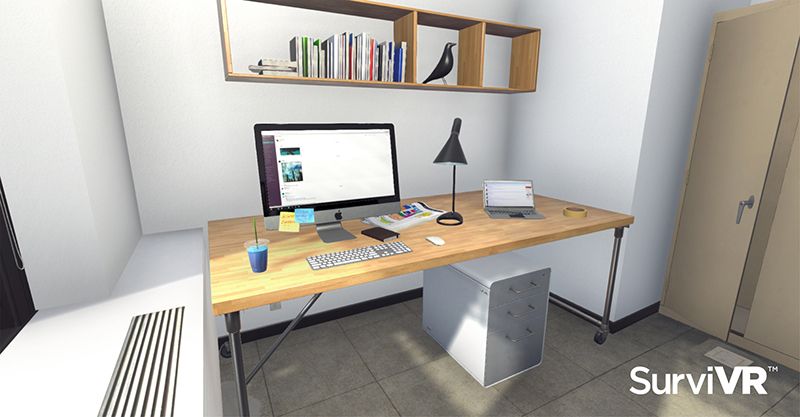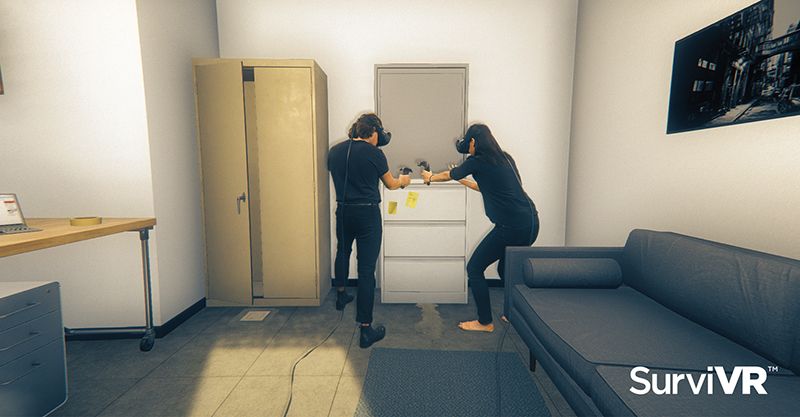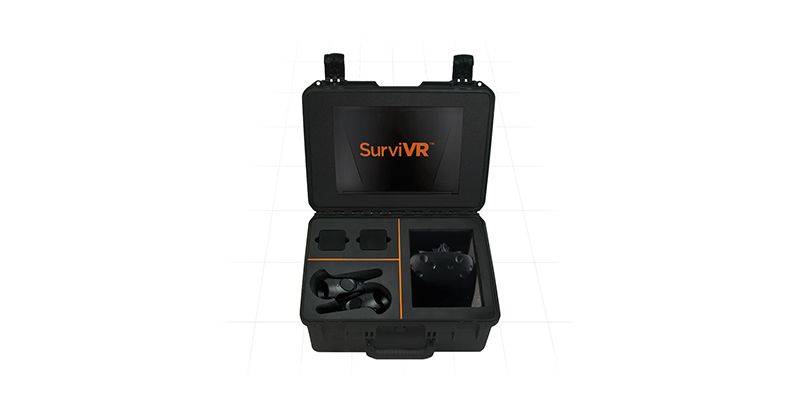Face an Active Shooter in Virtual Reality, and You May Be Better Prepared to Survive a Real-Life Encounter
A new VR program called SurviVR aims to train employees how to deal with an active shooter situation in the workplace
/https://tf-cmsv2-smithsonianmag-media.s3.amazonaws.com/filer/dd/41/dd413082-fb1d-4c90-b48c-42ceb964c94e/survivr_training.jpg)
You’re in your office when you learn there’s someone with a gun roaming the hallways outside. You can hear gunshots and screams. What do you do?
That’s the challenge for users of a new virtual reality program called SurviVR, designed to train employees how to deal with an active shooter situation in the workplace. The program works with HTC Vive, the virtual reality headset released earlier this year.
An active shooter situation is when an armed person or people actively shoot in a confined, populated area with the intent to kill. There were 20 such situations in the United States last year and 20 the year before, according to FBI statistics, resulting in a total of 231 deaths. This year saw the deadliest active shooter situation in U.S. history, with 49 people killed in a nightclub in Orlando.
“We’re sad that we even have to deal with these things,” says Lorenzo Gallo, CEO of The Safety Group, which helped developed SurviVR. “But this is the world we live in today.”
SurviVR is the result of a collaboration between The Safety Group, which does workplace safety trainings, and Human Condition Safety, which specializes in technology for workplace safety. The companies consulted with members of the FBI and the NYPD, various intelligence analysts, Navy Seals and other security, terrorism and survival experts to create the program.
In the training scenario, users have four options. They can lock themselves in the office. They can hide, perhaps in the office closet. They can run for an exit. Or they can use something in the office—a computer or a cup or a pair of scissors—as a weapon to fight the shooter. This is an improvement on standard active shooter training, Gallo says, which typically teaches people to lock themselves in place and hide. This “lock down” method is often ineffective, he says, and has resulted in numerous deaths in recent years.
In the training’s basic level, no one gets killed. But as the trainings become more advanced, players who make a wrong choice can be shot. There’s no blood or gore; the screen simply fades to black.
If this sounds terrifying, that’s the point, says Gallo. There are plenty of training programs to teach employees how to deal with workplace violence, sometimes involving role play with toy guns. But these trainings are basically games, Gallo says, with employees relaxed and even enjoying themselves. To teach people what they really need to know for an active shooter situation, they need to be scared.
SurviVR “will take the fear and turn it into confidence,” Gallo says.
The basic version of the program will be released at the end of this month or early in November. Its creators will also begin working on customizations for specific companies.
SurviVR makers could go into a specific facility, like a Gap or a Walmart, scan the location, and create a program that mimics that layout, Gallo says. That way employees could practice how to react to a shooter coming from their real back exit or hiding in their real dressing room.
Gallo sees SurviVR becoming as much a part of basic employee safety training as fire drills, perhaps used as often as once a quarter. Currently, about three hours’ worth of training is enough to receive a basic training certificate.
This isn’t the first virtual reality project designed by The Safety Group and Human Conditions Safety. They’ve created a virtual reality program for aspiring iron workers, which has users don goggles and walk across a construction beam that appears to be 23 storeys in the air to complete a task on the other side. Trainers can then study the behavior and stress level of users, and identify ones who might have trouble completing their tasks in the real world.
Similarly, SurviVR can help identify the “alpha males and alpha females” who would be especially helpful in an active shooter scenario, Gallo says.
“In an emergency situation, these are the people you need to sign up and take the lead,” he says. “If, God forbid, something happens, we know who the leaders are.”
/https://tf-cmsv2-smithsonianmag-media.s3.amazonaws.com/accounts/headshot/matchar.png)



/https://tf-cmsv2-smithsonianmag-media.s3.amazonaws.com/accounts/headshot/matchar.png)